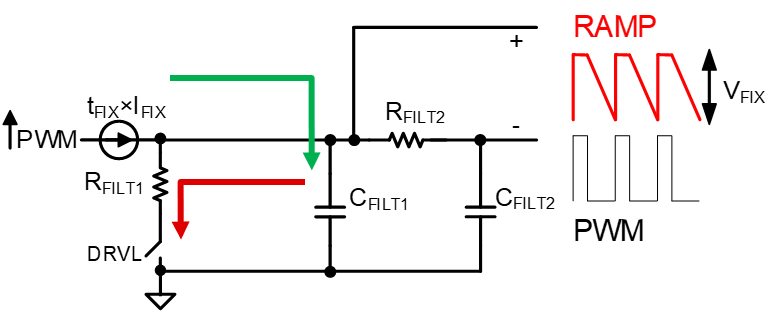SLYT710B september 2017 – august 2023 LM22670 , LM25145 , LM2696 , LM3100 , LM3150 , LM3475 , LM3485 , LM5017 , LM5116 , LM5119 , LM5140-Q1 , LM5145 , TPS40040 , TPS40057 , TPS40170 , TPS51116 , TPS53014 , TPS53219A , TPS53355 , TPS54325 , TPS54336A , TPS543B20 , TPS543C20 , TPS543C20A , TPS54478 , TPS54610 , TPS54620 , TPS548A20 , TPS548D22 , TPS54A20 , TPS56121 , TPS56C215 , TPS62097 , TPS62130 , TPS82130
- 1
- 1 Overview
- 2 Voltage mode
- 3 Voltage mode with voltage feed-forward
- 4 Peak current mode
- 5 Average current mode
- 6 Emulated current mode
- 7 Internally-compensated advanced current mode (ACM)
- 8 Hysteretic control mode
- 9 Constant on-time
- 10Constant on-time with emulated ripple mode
- 11DCS-Control™: Direct control with seamless transition into power-save mode
- 12Direct connection to the output capacitor (D-CAP™)
- 13D-CAP+™
- 14D-CAP2™
- 15D-CAP3™
- 16D-CAP4™
16 D-CAP4™
D-CAP4 includes the advantages as D-CAP3, but desensitizes the loop gain to the output voltage in order to improve the transient response at higher output voltages. The ramp injection principle is the same as D-CAP3, except the ramp common mode and amplitude are independent of the output voltage. The ramp common mode is inversely proportional to (1-D), keeping ramp amplitude constant, so there is less need to adjust the ramp for different output voltages.
When to use: When fast transient response time is needed with higher output voltages, like 3.3 V or 5 V.
Popular devices: TPS54KB20
